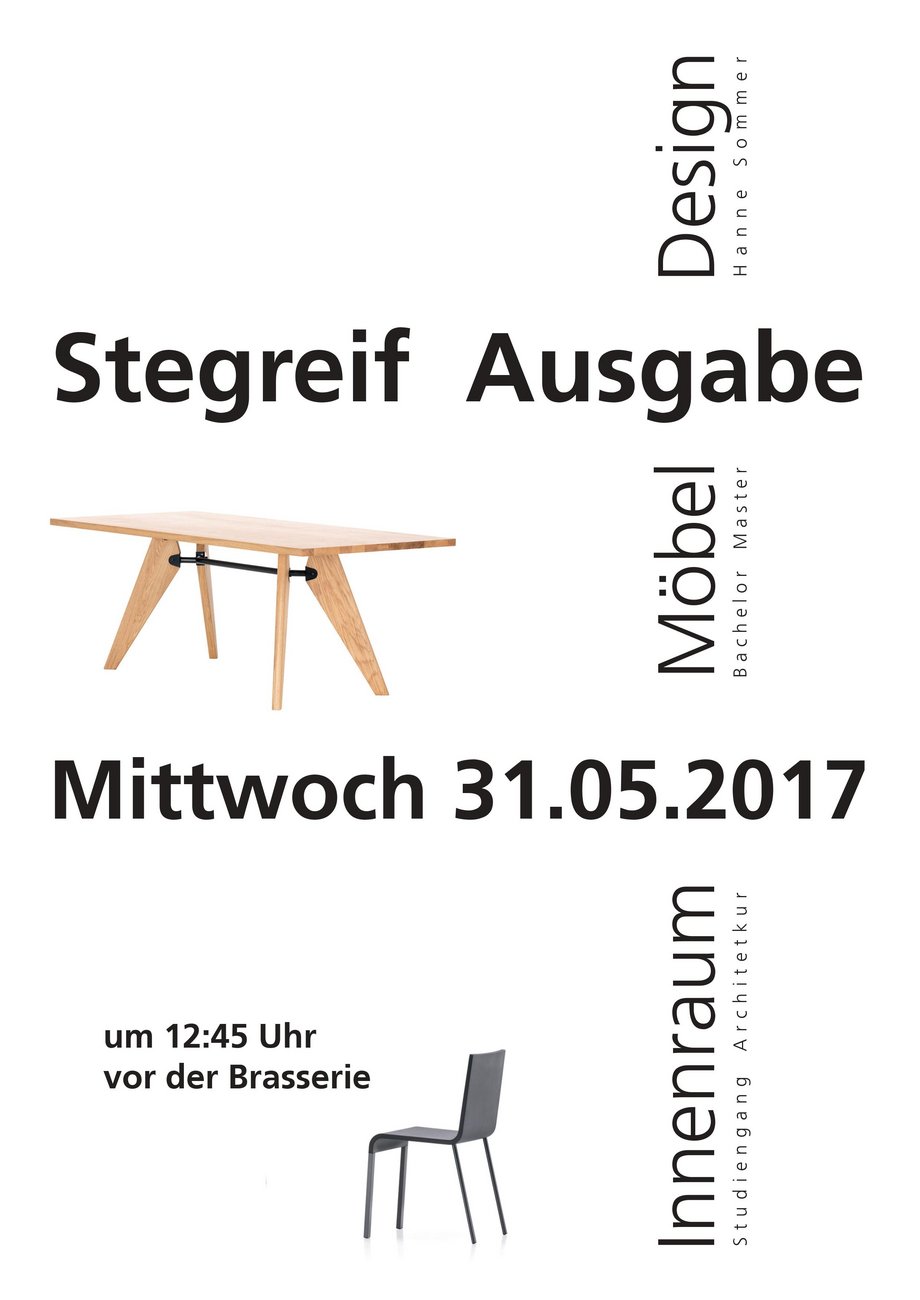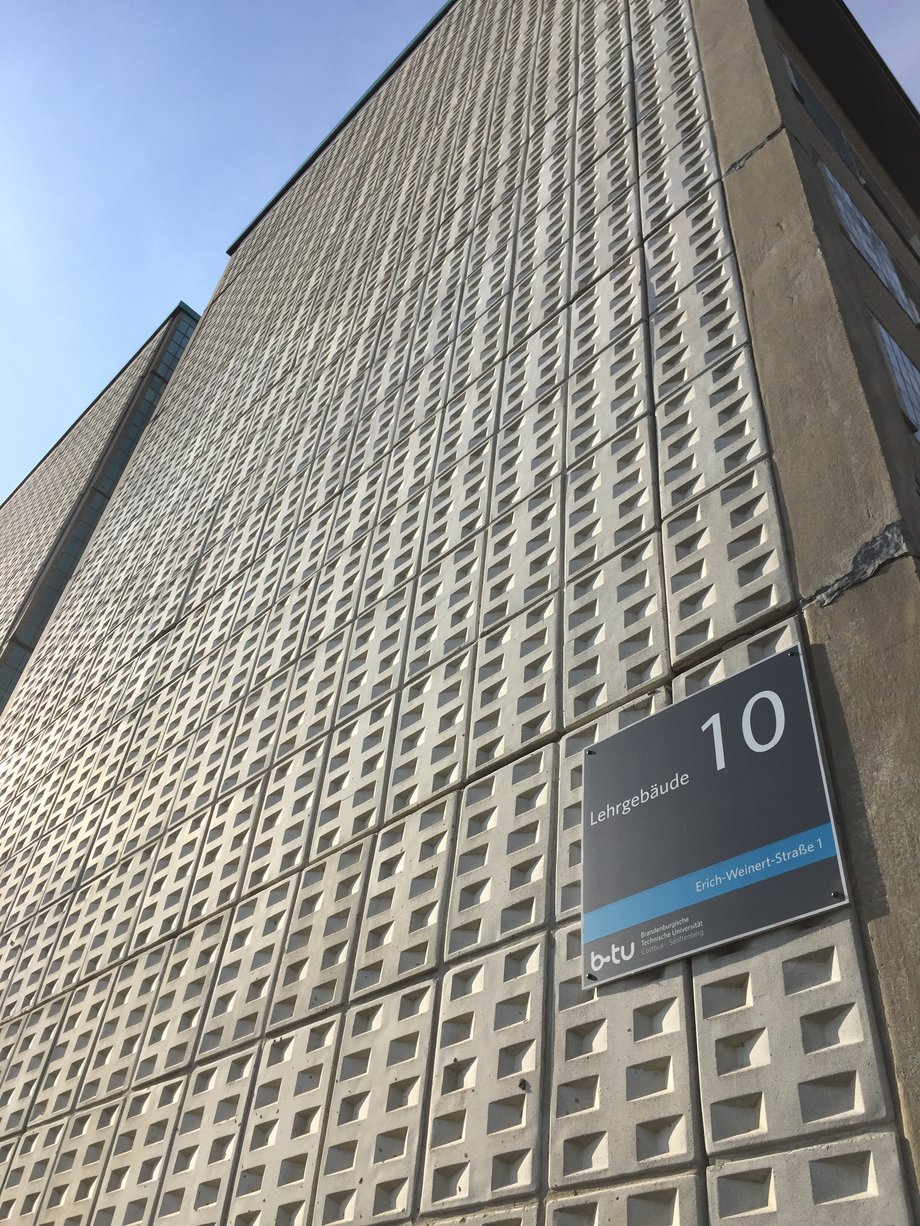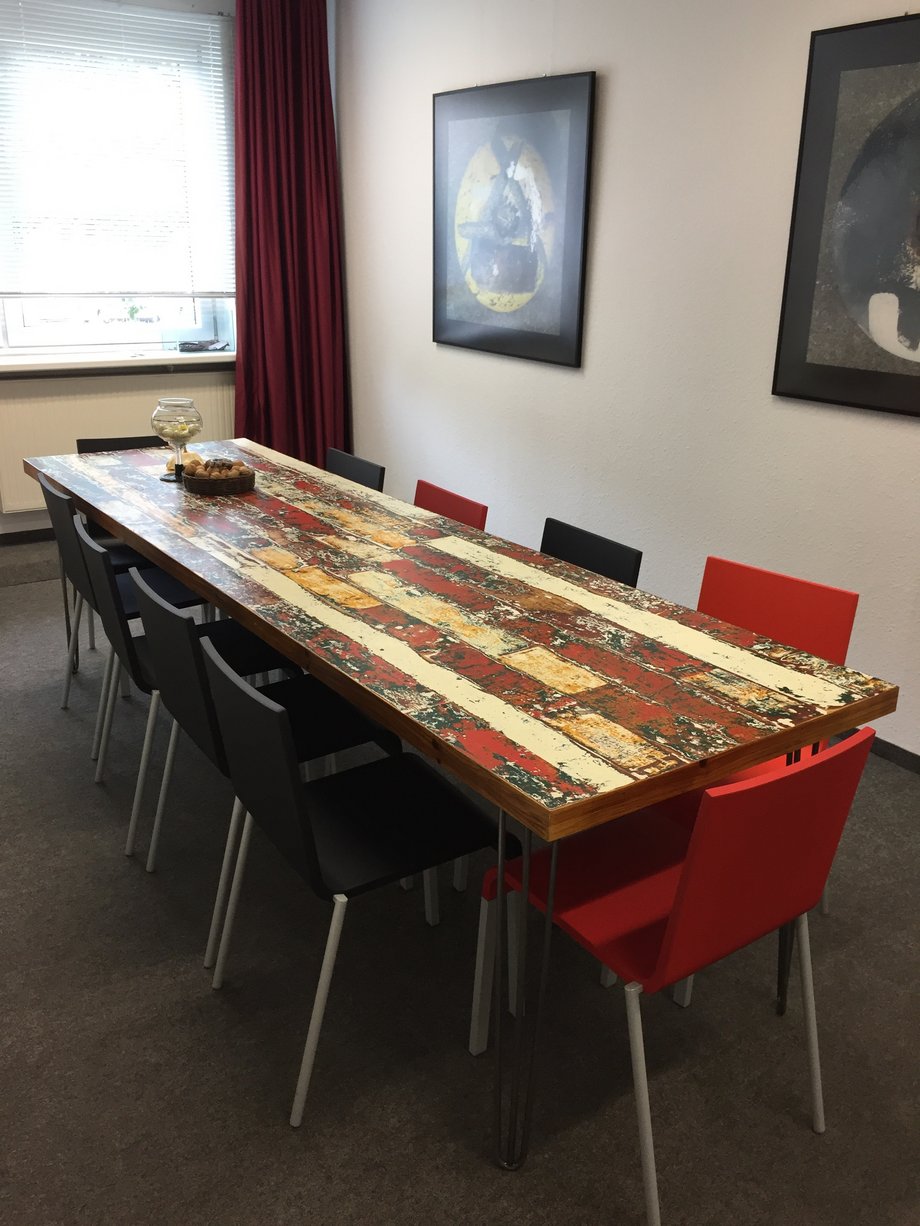Impromptu Design “Discursive Table” 2017/18 | Project
The Chair of Technoscience Studies was founded in Summer Semester 2017, owning several rooms whose usage and interior were to be defined anew. The rooms are situated in a soviet-style prefabricated building called “Lehrgebäude 10” and were designed as student dormitories. It was challenging to reorganize these small, intercommunicate rooms with low-quality material and functions, so they can become welcoming working spaces.
It was clear that there should be a room that contains only a table and several chairs. All attention shall be focused on professional discussion in a group, evolving into a discursive community during the particular semester. Moreover, the furniture’s look and touch had to be aesthetically pleasing while the seating should be comfortable. This should contribute to a communicative and inspiring working environment. Topics like culture of technology and design theory as well as critical questions regarding sustainable development and climate ethics should be visualized, too.
Thus, the Technoscience Studies team started to inspect a room full of hundreds of books, papers, exams and manuscripts, redistributing them to the university library, other rooms, lockers or just the recycle bin. After rating, distributing and disposed the whole interior, an empty room of approximately 19 m² in a 2:1 ratio had finally been revealed.
The already ordered chairs travelled their way from Weil am Rhein, Baden-Württemberg. The manufacturer Vitra viewed its furniture from the outset as a contribution to an industrial culture of environmentally harmless production, usage and disposal. Thus, design stands for ecological, social and economic responsibility. The comfort and simple shape of our new chairs, designed by Maarten van Severen, materialized issues about culture of technology and they give always reasons for discussion, since they are now sit-uated in our rooms.
Although, there still was the question of how we should obtain a matching table. After a brainstorming session, there was the agreement that it should be made from students for students.
Student staff Vito Bragato suggested to make a request for it in the BTU’s carpentry. In cooperation with Dipl.-Ing. Hanne Sommer (architecture), this led to a tendering for an impromptu project of architecture majors. Kick-off session took place May 31st, 2017 in our room with nothing but chairs where around 25 students were pushing and squeezing each other. The task has been described as follows (see: tendering of the impromptu project):
The table shall bring students and the lecturer together. It should have a shape that not only fit in the room, but should be inviting for communication between the users in special. Furthermore, the table should have a visually appealing design and be a good fit to the chairs. The task is to plan the table in detail and to suggest the materials.
The students had three weeks of preparation, before Hanne Sommer and Astrid Schwarz assessed the drafts. We chose a design that looked potentially realizable. The concept by Valentin Krase was the most convincing, the criteria being constructively and conceptually put to practice. Valentin Krase accepted the challenge and made an estimate. He brought further detail into his plans while the concept of the table changed during discussion of elements, surfaces and wood. Professor Jo Achermann from BTU joined the team as well.
Different aspects of the students’ daily life like examinations and practical tasks delayed the project as well as the poster, being not detailed enough for a realization of the project. Plus, the carpenter’s workshops in the Cottbus area were completely booked up or weren’t interested in the project itself. Finally, we made the decision of giving the task to Geyersbach in Berlin.
Uli Geyersbach’s intention is presenting old wood with a second life as unique furniture. Historical and regional “growing” of his materials are crucial for his work. That’s why he works with timber once used in Berlin and Brandenburg houses. These are already more than 100 years old and are recycled in his workshop (interview on BM Online). Thus, different object histories overlay each other, while random finds come into (different) use again and are rearranged in the process. This practice and ideas of material usage convinced us, because it was quite close to our original idea.
The table called Lux#31 is placed in our room since October 2018. It looks beautiful, feels nice and offers a high quality in work experience. He displays an ecologically oriented culture of technology and visualizes sustainability, regional origin and responsibility.
We want to thank all people that helped us bring the idea of a table from studens for students to life, creating a real discursive table.



